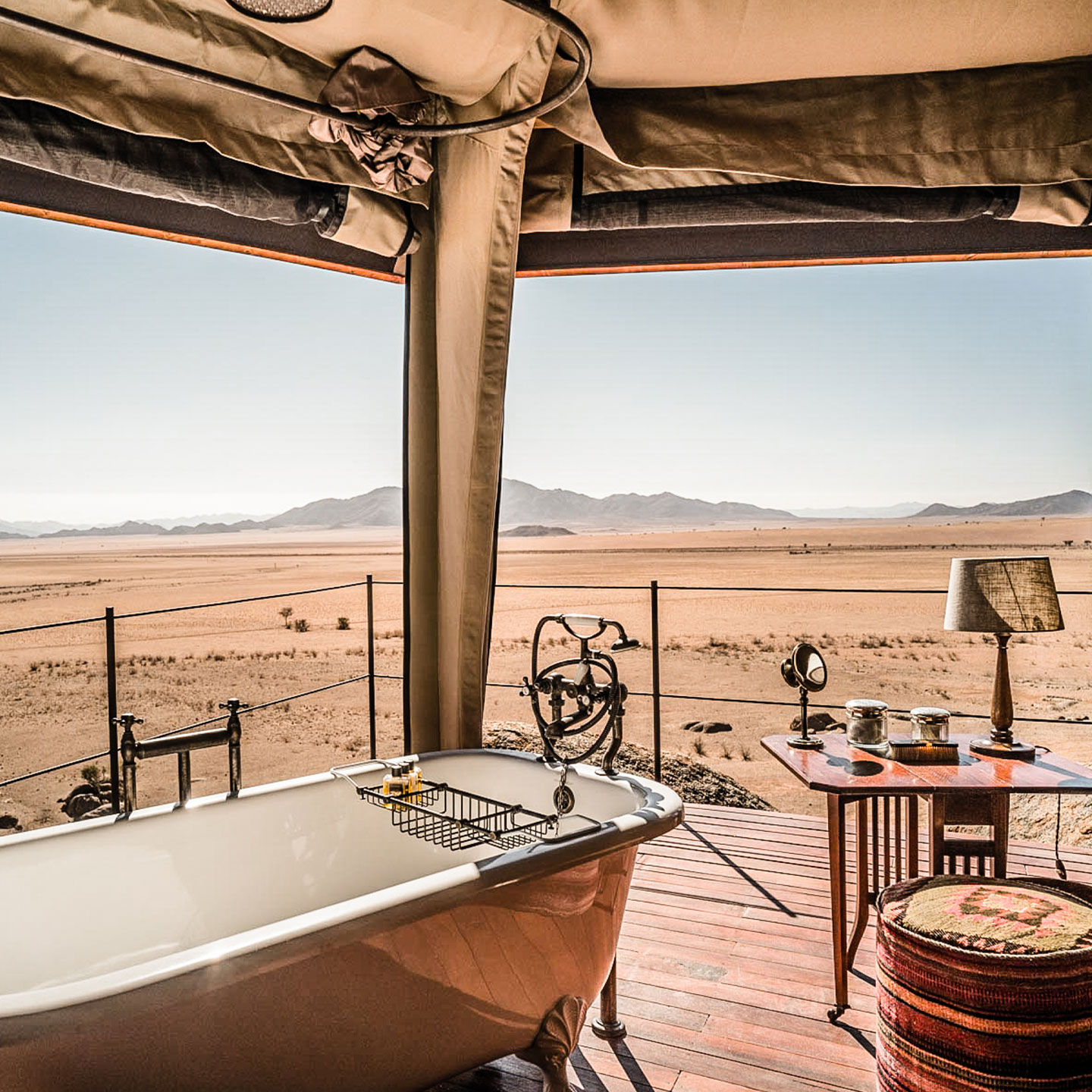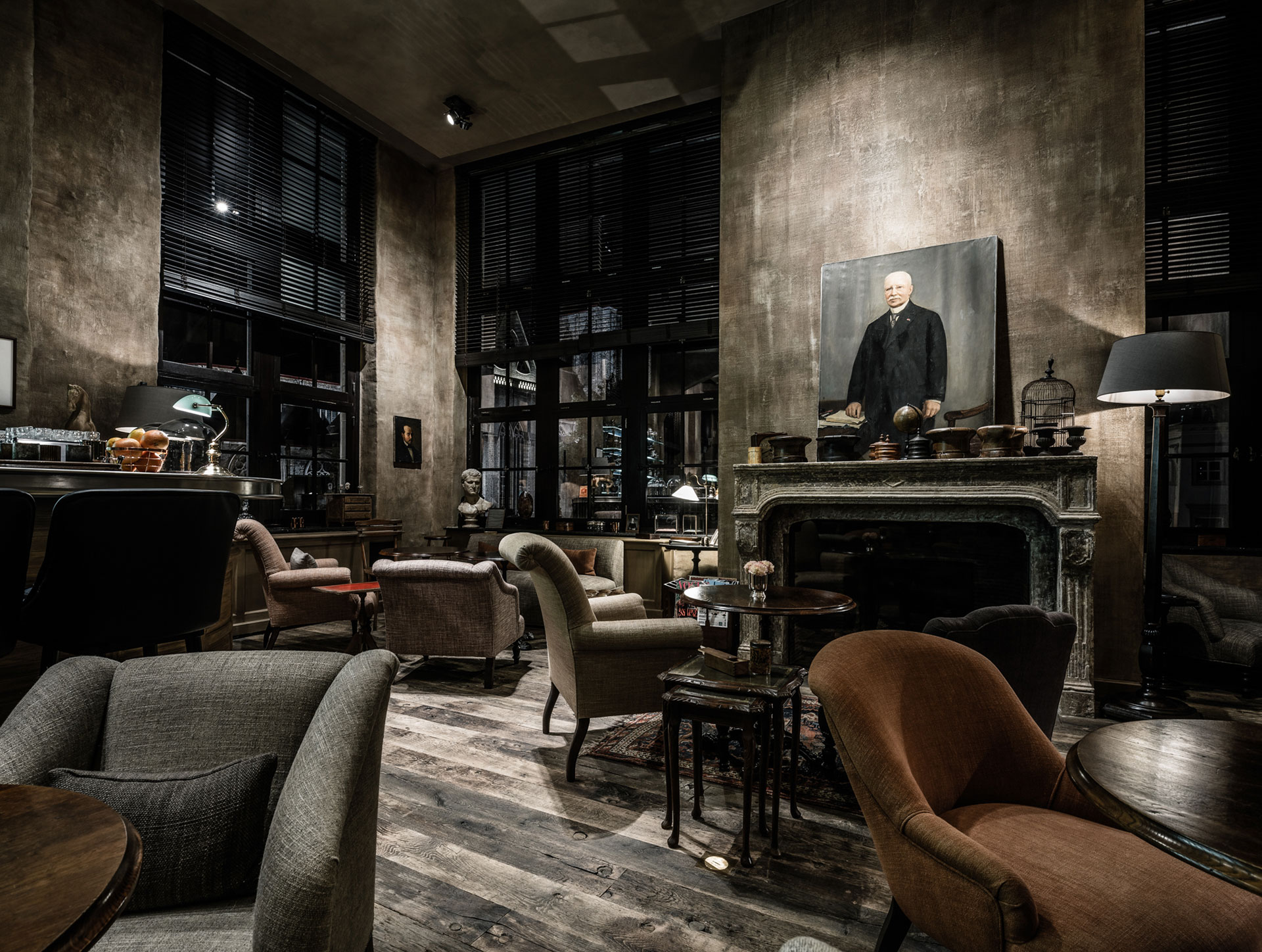
Arnaud Zannier doesn’t just create hotels, he creates panoramas — complete, comprehensive hospitality experiences with all the drama and amusement of the cinema. When the world returns to traveling again, the world will deserve to stay at hotels like his.
There’s a nineteenth-century German concept called Gesamtkunstwerk, in which multiple forms of art are combined to produce a single work. Filmmaking, with its fusion of writing, photography, performance, sound, editing, and on and on, is often cited as a modern expression of the idea.
In English, it’s known as “total art,” and there are hotels that embody the concept. We don’t mean all-inclusive resorts. We mean hotels that within their scope hold every facet of the travel experience: setting, service, architecture, design, cuisine, history. We mean the Zannier hotels.
For an example, look to Zannier’s Belgium project, 1898 The Post. Set in a 110-year-old neo-Gothic post office in the storied city of Ghent, and filled with antique furniture, stone walls, period postcards, and grand bookcases, the hotel is an all-encompassing scene. One reviewer noted, “you may catch yourself wondering: are you in a hotel at all, or living out a long-lost fairytale as a bibliophilic baron or baroness?” Through a careful curation of what makes Ghent unique, 1898 The Post gives the traveler a comprehensive experience of the place: it’s a total art.

Meanwhile, that cinema should come up in a discussion of Zannier is nearly a prerequisite. Angelina Jolie, as it happens, plays a role in the story of three of their six properties. The Siem Reap location, Phum Baitang — Zannier’s second hotel after Le Chalet in the Alps — first drew the actress into the plot, hosting Ms. Jolie and her family for months while she filmed First They Killed My Father. Later, the movie star’s recommendation that Arnaud Zannier meet with her friend, a conservationist in the Namib Desert, eventually spurred two projects: the stunning nature preserve at Omaanda and the gorgeous fantasy camp at Sonop.
But if you worry too much about the starpower of it all, you miss the finer points. Perhaps I was too enthralled myself with the glamour of the Jolie-inflected properties. When I asked Mr. Zannier about his hotels, I noted the more adventurous settings of Siem Reap and Namibia, compared to a city closer to the French hotelier’s home, like Ghent. Politely, he pushed back. “Opening in Ghent was also an adventurous choice,” he noted, because “at that time, no one thought” a luxury hotel could survive there.
With 1898 The Post, he’s more than proven the doubters wrong, and he’s done so with a formula he’s used around the world. Or rather, an anti-formula. “If you just do the same thing a bit better or a bit cheaper, in time you will lose,” Mr. Zannier once told Forbes. “You have to bring a different story.” In fact, his work in Ghent is perhaps the best advertisement for his philosophy. The “adventurous” settings of Phum Baitang, on the outskirts of the miraculous Angkor Wat — and his two projects in the ephemeral Namibian landscape — hardly require any justification. But in Ghent, the explanation for his success is less apparent, the triumph better explained by his ethos.

It’s the painstakingly chosen design, the traditional architecture, the historical references that give a Zannier hotel its story. They become destinations in their own right, and yet each is rooted, firmly and crucially, in its setting.
Granted, it’s a lot to ask from your lodging, and it’s a luxury to get it. But to Arnaud Zannier, this is what real luxury is. Status and brand names aren’t as important to him. And for a hotelier whose own story has become entwined with the name of a movie star, it’s appropriate that he explains what is important, over and over again, in terms of narrative.
Guests don’t just want comfort anymore, they want experiences. They don’t just want to be told the story, they want “to be actors.” It’s perhaps that last piece — the traveler, playing their role — that makes the art complete.
Read on for more about Zannier’s six hotels around the world, including the brand new Zannier Bai San Ho in Vietnam.
Zannier Le Chalet
Megève, France

Arnaud Zannier saw Le Chalet as his chance to test the premise he’d been kicking around, the idea that “the future of luxury is more about moments and experiences than gold taps and marble.” Le Chalet, then, looks to strip the luxury ski chalet of its pretensions, opting for a simple, minimalist design and no small focus on the culinary fame that defines the small city of Megève.
The aim is to make you feel like you’re in your own private chalet, but with all the amenities you’d expect at a five-star hotel: a huge indoor swimming pool, a great spa, and a gourmet restaurant. “Le Chalet is the original property of the group, so it has a special place in our hearts,” says Zannier. “My team and I learnt a lot with this project.”
Indeed, the deliberate architectural choices, the reliance on artisan craftsmanship, and the overall elegance of the setting is something you’ll see throughout all their properties.
Zannier Phum Baitang
Siem Reap, Cambodia

The name translates to “green village” — and so the resort, rather appropriately, peppers its buildings across 20 acres of land spotted with lemongrass and paddy fields. The Cambodian influence is intrinsic to the resort, the 45 villas based on traditional Khmer homes, all thatched roofs and stilted elevation, filled with antiques and handmade furniture (as well as the more modern amenities, Nespresso machines and rain showers). Meanwhile, the restaurant serves traditional dishes of curry and fish amok in a 100-year-old farmhouse.
Even the spa here honors the setting, paying homage in its design to the famous temples at Angkor Wat just down the road.
Phum Baitang is also where the connection to Angelina Jolie begins. The actress rented out the full property while shooting a movie in 2015, bringing her family and embedding herself firmly in the Zannier story. Reflecting on her time there, Jolie commented that Phum Baitang was a “blend of Cambodian traditions and culture with a modern consciousness.”
We’d have to enthusiastically agree.
1898 The Post
Ghent, Belgium

As we touched on above, 1898 The Post was Zannier’s third hotel, set in the perhaps unlikely location of Ghent, Belgium, and taking nearly the whole of its inspiration from the storied building. As you could guess, this old post office began construction in 1898. It finally opened in 1909, a few years before Ghent hosted the 1913 World’s Fair.
While Zannier’s beautiful renovation certainly gives guests the feeling of wandering through a long-past era, we’ll note that, like Phum Baitang, 1898 The Post is anything but a precise historical reconstruction. Inside you’ll find echoes of varying periods, from the medieval atmosphere of the winding stairways to a sort of early modernist vibe in the richly colored and textured guest rooms and suites.
Then there’s the bar, The Cobbler — named after a cocktail shaker, not the profession — with an old time atmosphere that pervades the space nearly as much as all around views of the city’s historic spires.
Zannier Omaanda
Windhoek, Namibia

In the midst of a 9,000 hectare animal reserve sit 10 luxury huts, inspired by traditional Namibian architecture, filled with luxury comforts. This is Omaanda. But despite the attractions on-site, the real draw is the nature preserve, where the Naankuse Foundation releases rehabilitated animals that have been injured or orphaned.
How Zannier became involved with the organization is a function of his relationship with Angelina Jolie, who, during her stay at Phum Baitang, told Mr. Zannier about her friend Dr. Rudie van Vuuren, the conservationist behind the foundation. “During one of our discussions,” explains Mr. Zannier, “she explained that one of her friends who was managing a foundation was struggling to buy a piece of land next to his reserve. I got curious about this country and decided to go.”
Within a matter of weeks, Mr. Zannier had fallen in love with the place, finding himself a firm believer in van Vuuren’s vision. Together, they now run the Zannier Reserve by Naankuse. While the region’s wildlife benefit from the space and from the reserve’s “own permanent team of anti-poachers and rangers,” guests of Omaanda reap the benefits, taking excursions to see the rhinos, elephants, big cats, and meerkats and to learn about the work that keeps it running.
Zannier Sonop
Namib Desert, Namibia

On his first visit to Namibia, Zannier didn’t just check out the space that would become Omaanda. Flying over the vast and alien Namib desert, says he “immediately visualized” what would become Sonop: “a remote tented camp on top of those impressive boulders.”
He made that vision come true, as Sonop makes its home in the strange and ephemeral landscape of the world’s oldest desert, placing its luxurious tents on boulders above the arid floor. The guests here take on the role of British explorers visiting in the 1920s, sleeping in four-poster beds and enjoying full English breakfasts before exploring the boundless landscape.
If Omaanda is all about the wildlife, Sonop is — as Zannier’s communications manager, Quentin Guiraud, explains — “less about the fauna (rare in the desert) and more about the flora and the immensity.” Guests discover it by foot, electric bike, horseback, or even hot air balloon. As he did, Zannier would encourage you to see these two very different sides of Namibia on the same trip.
Zannier Bai San Ho
Bình Định, Vietnam

Like most of the Zannier projects, Bai San Ho, in the Vietnamese province of Bình Định, stems from another. Following the success of Phum Baitang, Mr. Zannier tells Tablet, he knew he wanted to open a second hotel in South East Asia. In fact, Zannier senses a growing trend — particularly among millennials — of travelers coming to explore this part of the world. When he discovered this “true gem nestled in a stunning natural setting,” he knew it was his chance to develop what he calls “one of the most audacious projects in the country.”
Bai San Ho is far from the big cities and 200 kilometers from both Na Trang and Hoi An. That’s by design. “We wanted to escape from mass tourism and offer our guests a resort where they could experience genuine Vietnamese hospitality… while enjoying probably one of the nicest bays and beaches in the country.”
The 73 suites and villas, in typical Zannier style, reflect the architectural traditions of the region, and guests have the chance for active participation in the beauty of the area — a coral reef and white sand beach await for snorkeling, fishing, canoeing and the like. In a Zannier first, private residences will go on sale as well.







